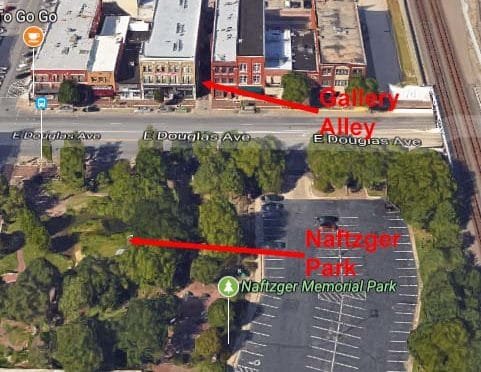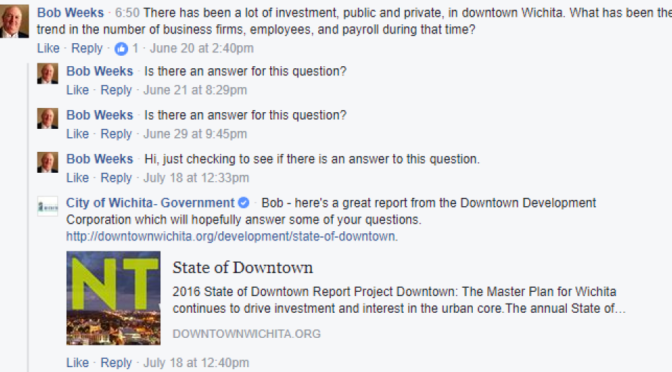Tag: Downtown Wichita revitalization
-

Redesigned Naftzger Park likely not only subsidy
The developers of property near Naftzger Park in downtown Wichita will possibly receive millions in other subsidy.
-

Naftzger Park land ownership
One of the issues surrounding Naftzger Park in downtown Wichita is land ownership.
-

Naftzger Park public hearing
On Tuesday August 15 the Wichita City Council will hold a public hearing to consider authorizing spending TIF funds on Naftzger Park.
-

WichitaLiberty.TV: Naftzger Park
Wichita Assistant City Manager and Director of Development Scot Rigby joins hosts Bob Weeks and Karl Peterjohn to discuss the plans for Naftzger Park. Then, Bob and Karl continue the discussion.
-

Naftzger Park construction manager
The City of Wichita seeks a construction manager for the construction of Naftzger Park.
-

Naftzger Park contract: Who is in control?
The City of Wichita says it retains final approval on the redesign of Naftzger Park, but a contract says otherwise.
-

Downtown Wichita gathering spaces that don’t destroy a park
Wichita doesn’t need to ruin a park for economic development, as there are other areas that would work and need development.
-

Naftzger Park concerts and parties?
In Wichita, a space for outdoor concerts may be created across the street from where amplified concerts are banned.
-

A Wichita social media town hall
A City of Wichita town hall meeting ends in less than nine minutes, with a question pending and unanswered.
-

Naftzger Park tax increment financing (TIF)
Background on tax increment financing (TIF) as applied to Naftzger Park in downtown Wichita.
-

Upcoming Naftzger Park legislative action
The redesign of Naftzger Park in downtown Wichita is not a done deal, at least not legally.
-

Wichita WaterWalk contract not followed, again
Wichita city hall failed to uphold the terms of a development agreement from five years ago, not monitoring contracts that protect the public interest.